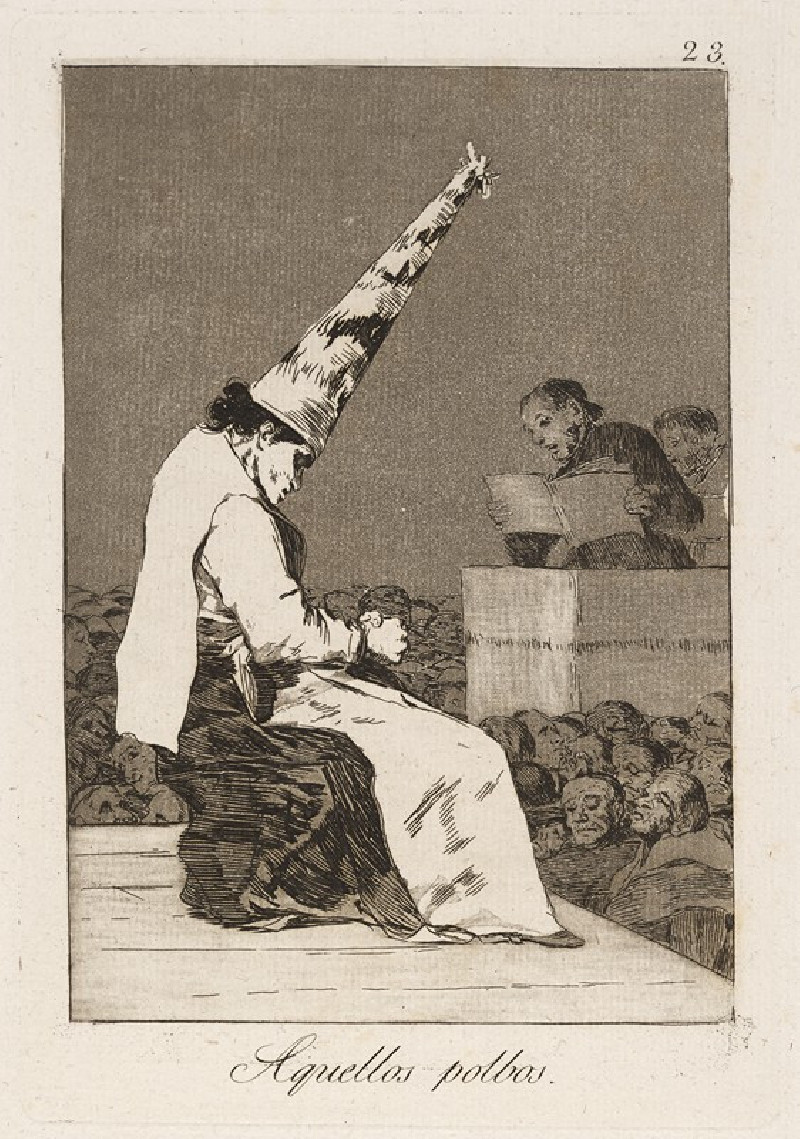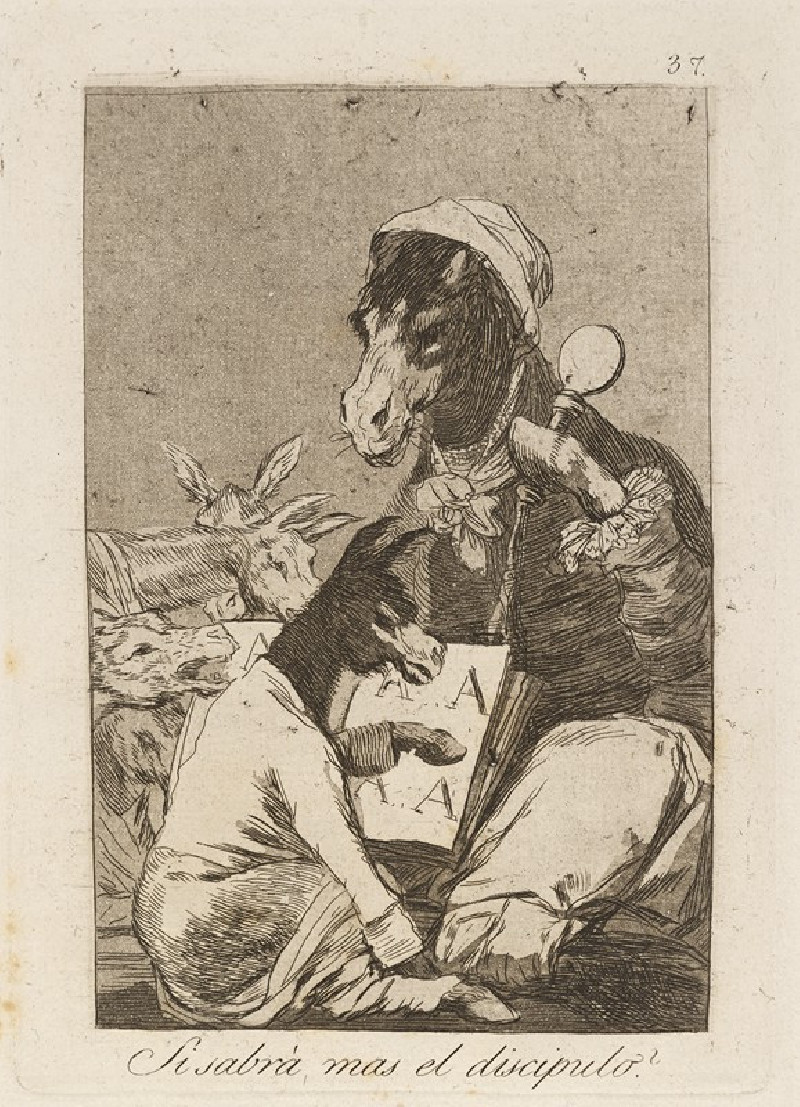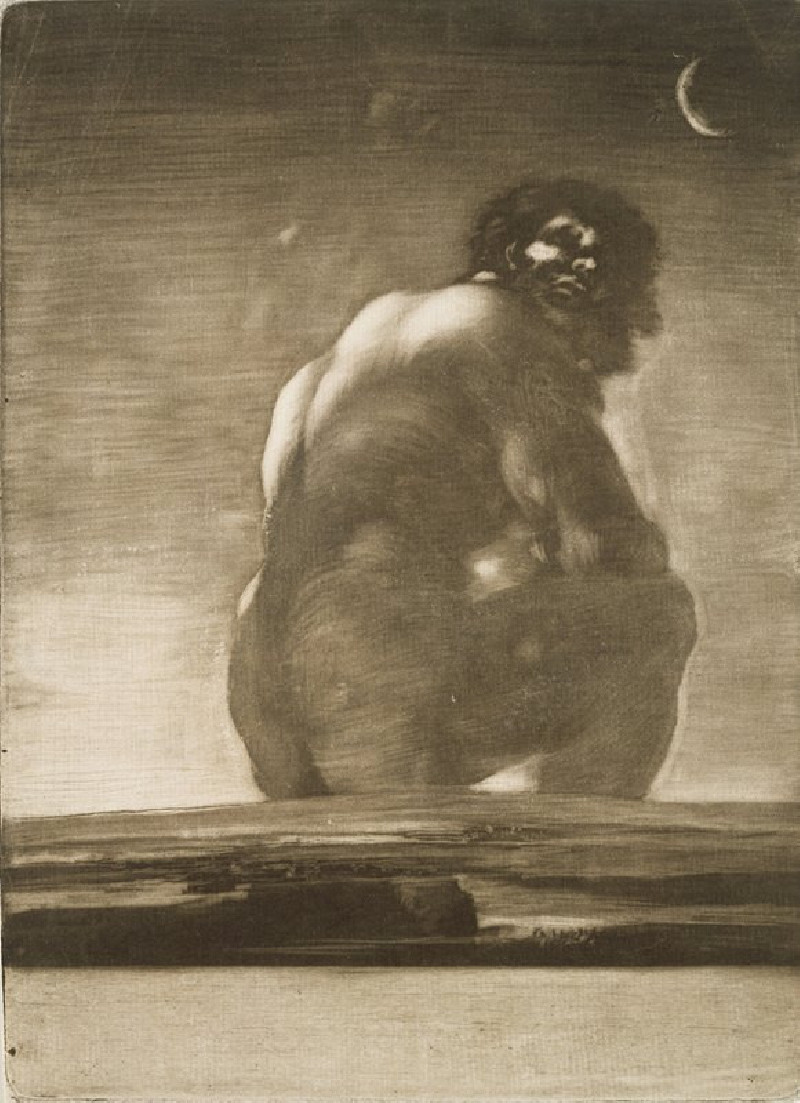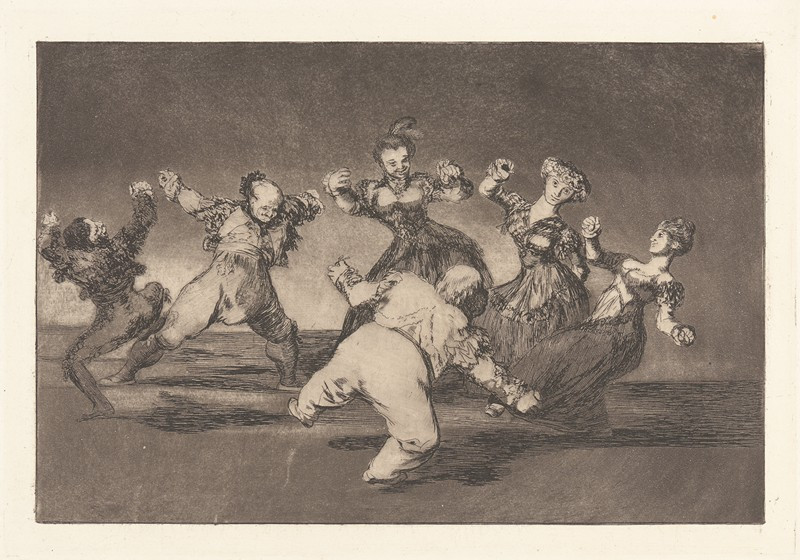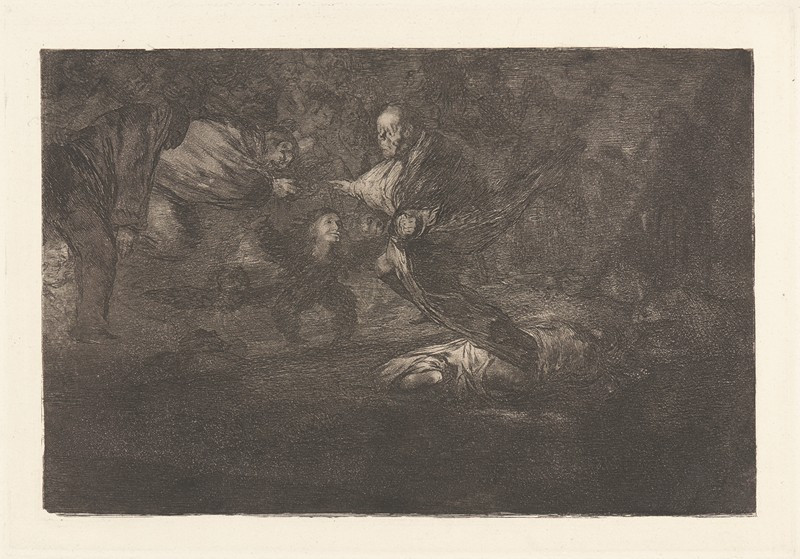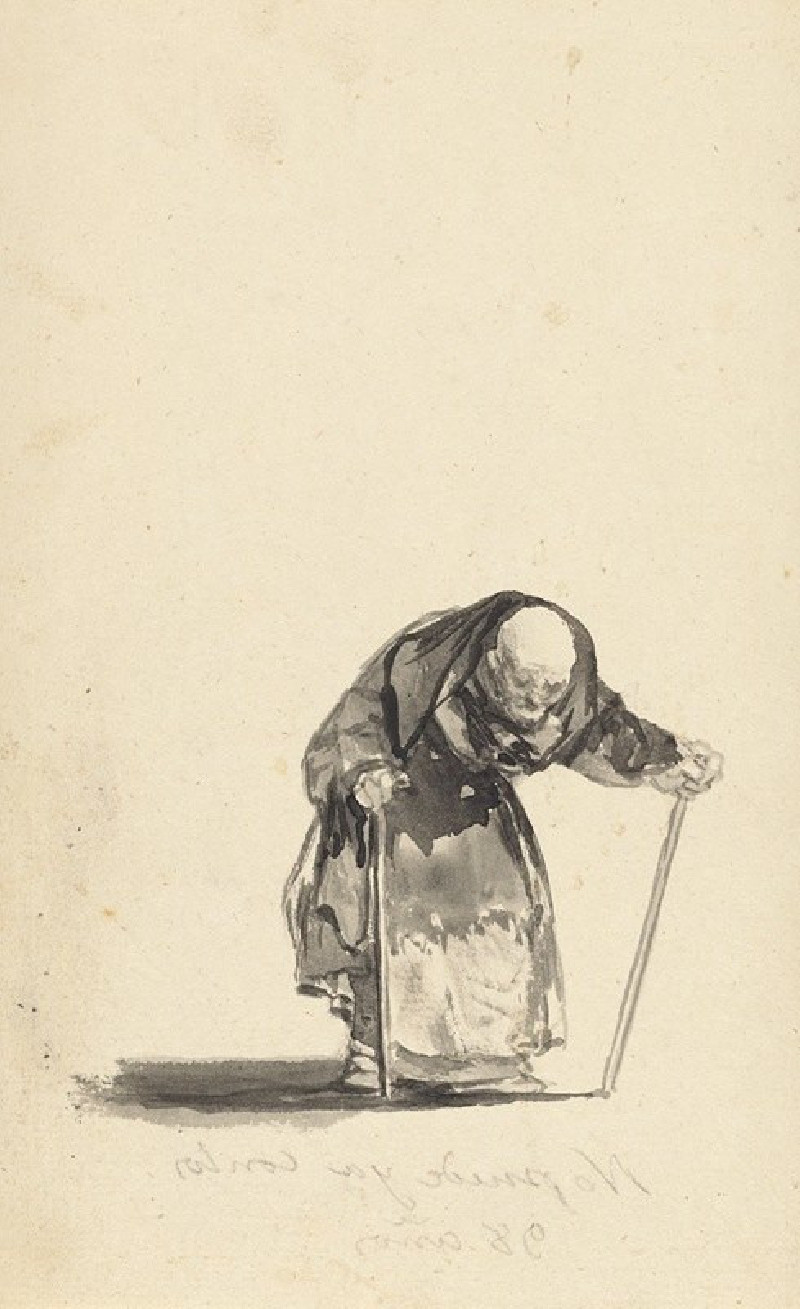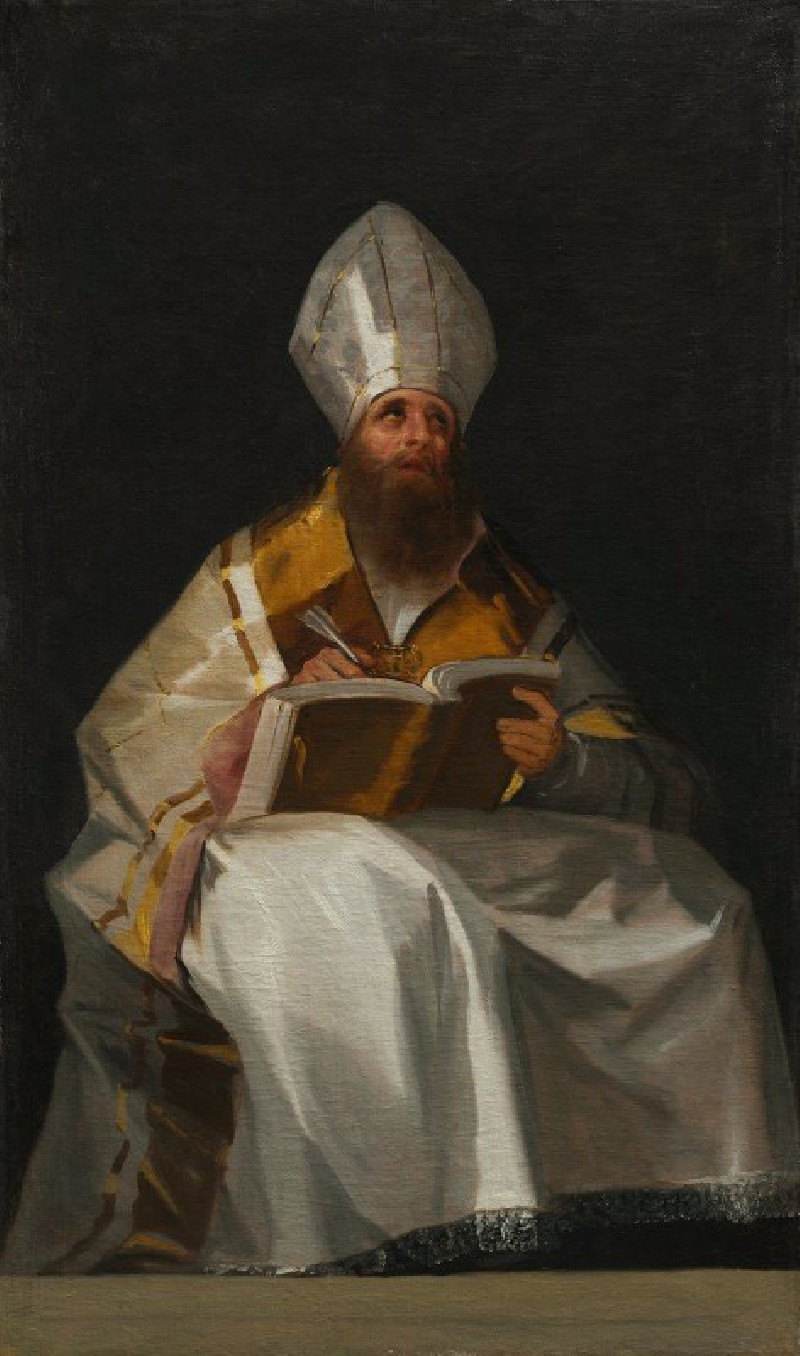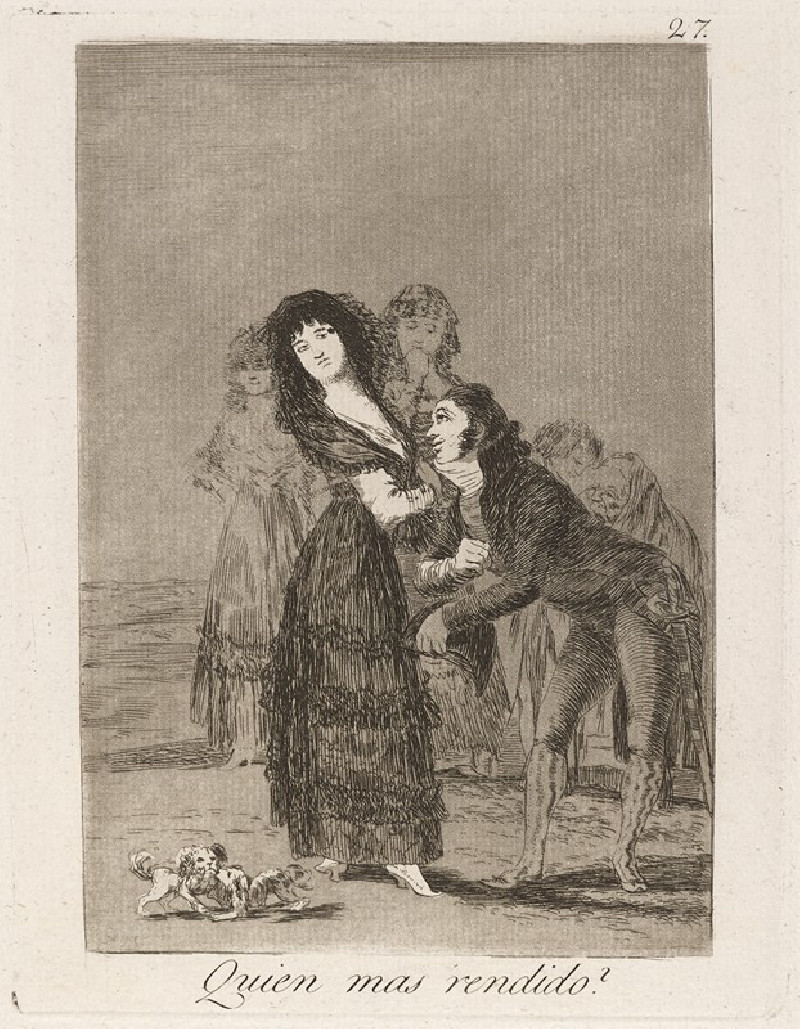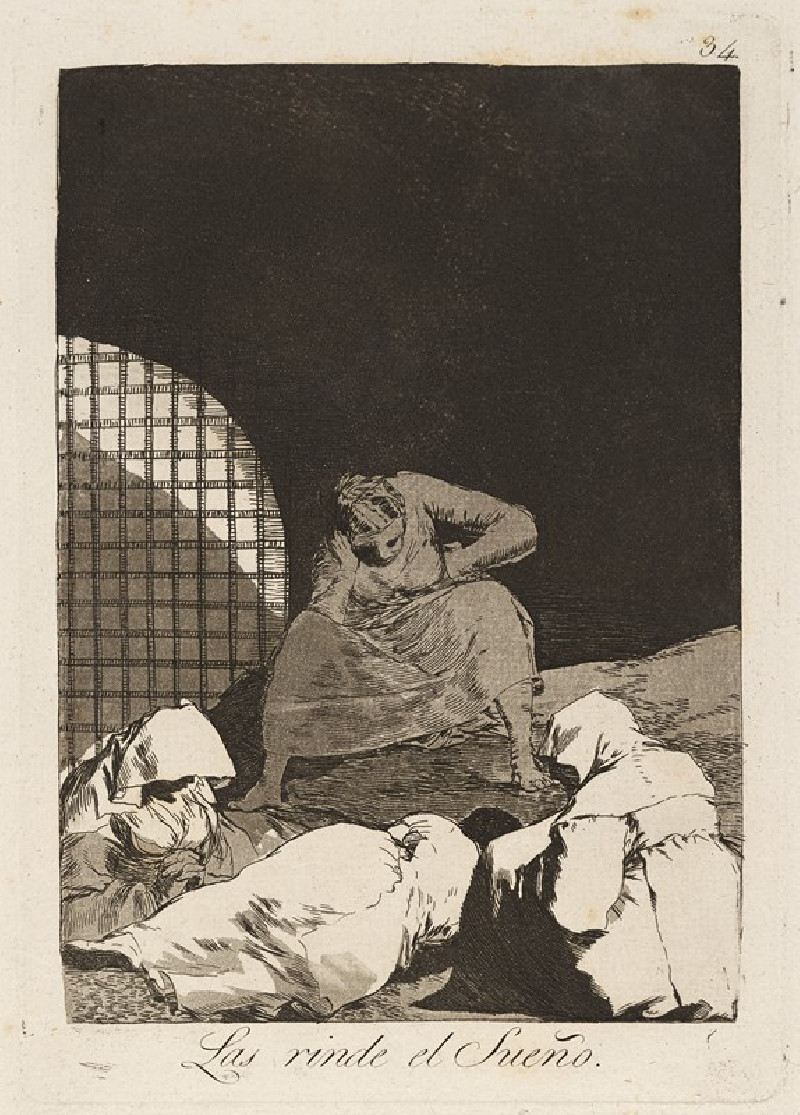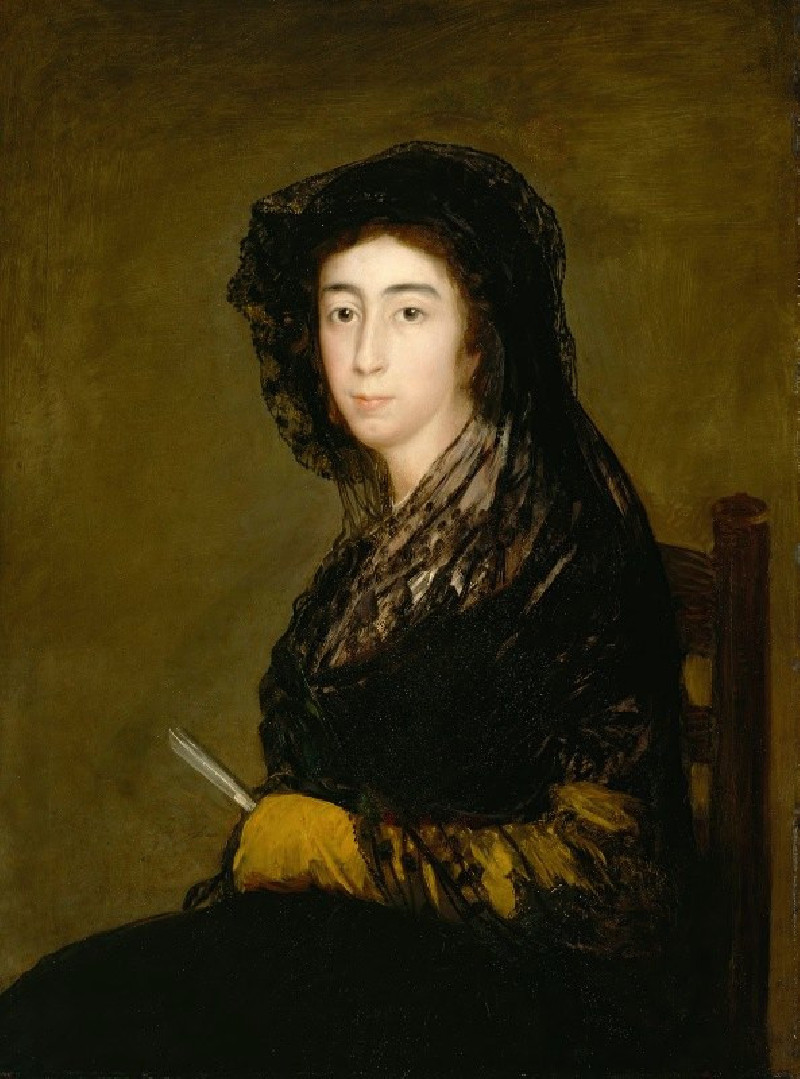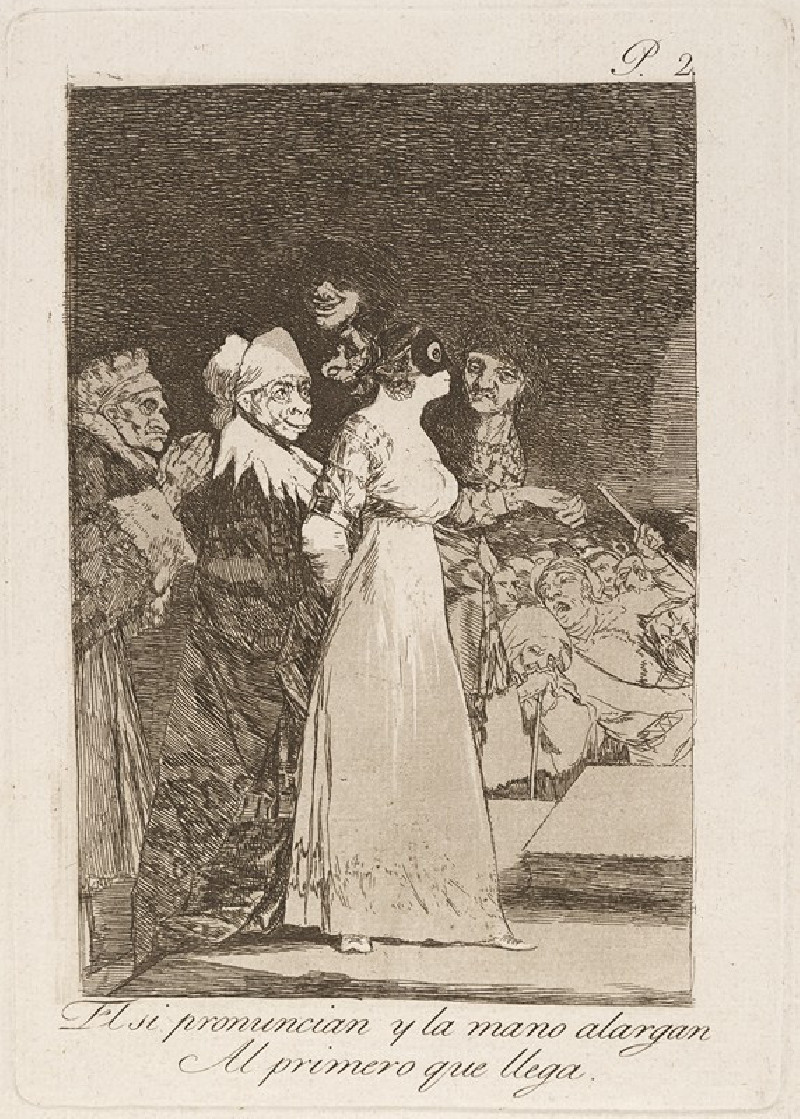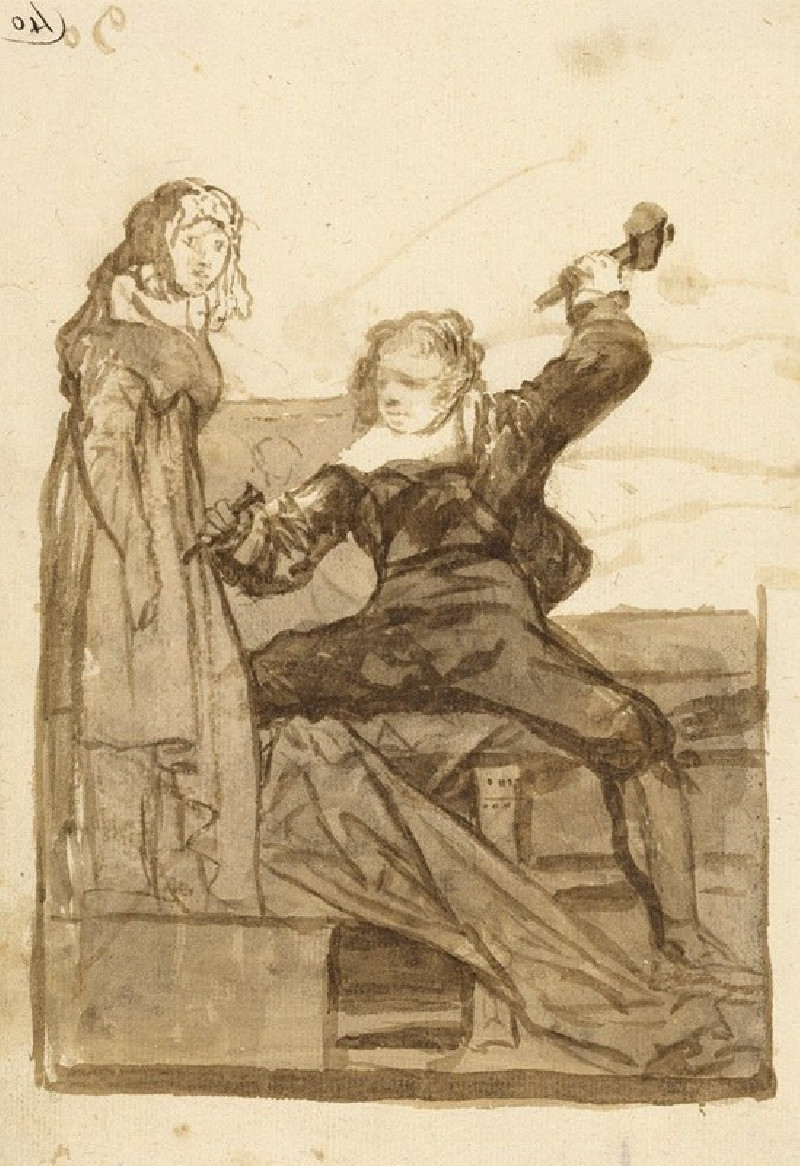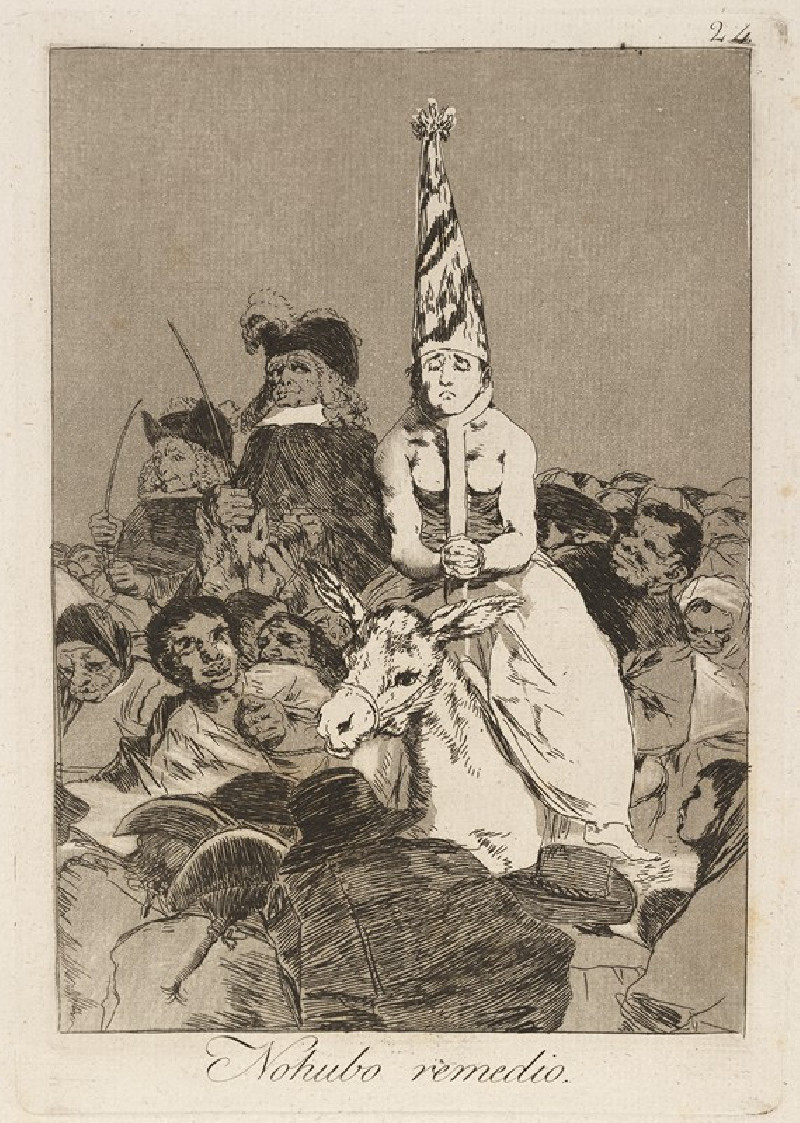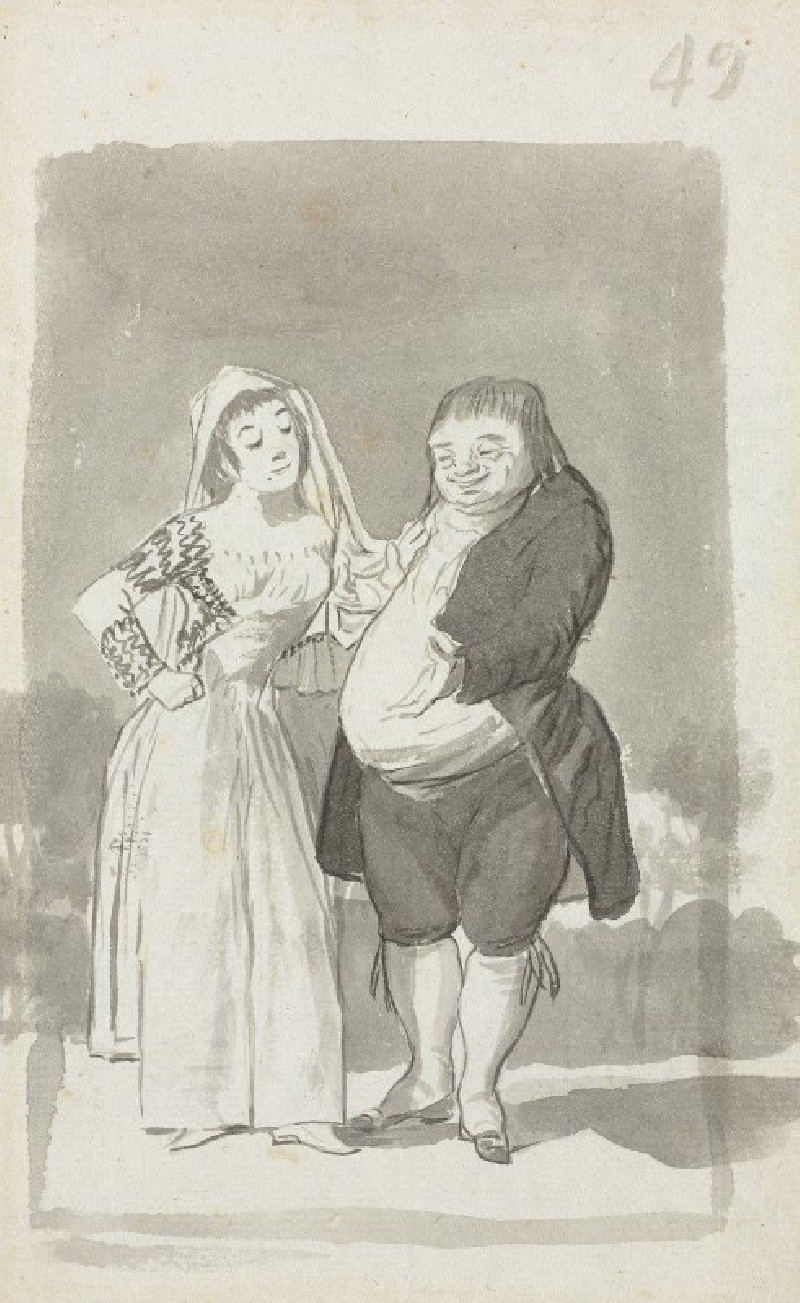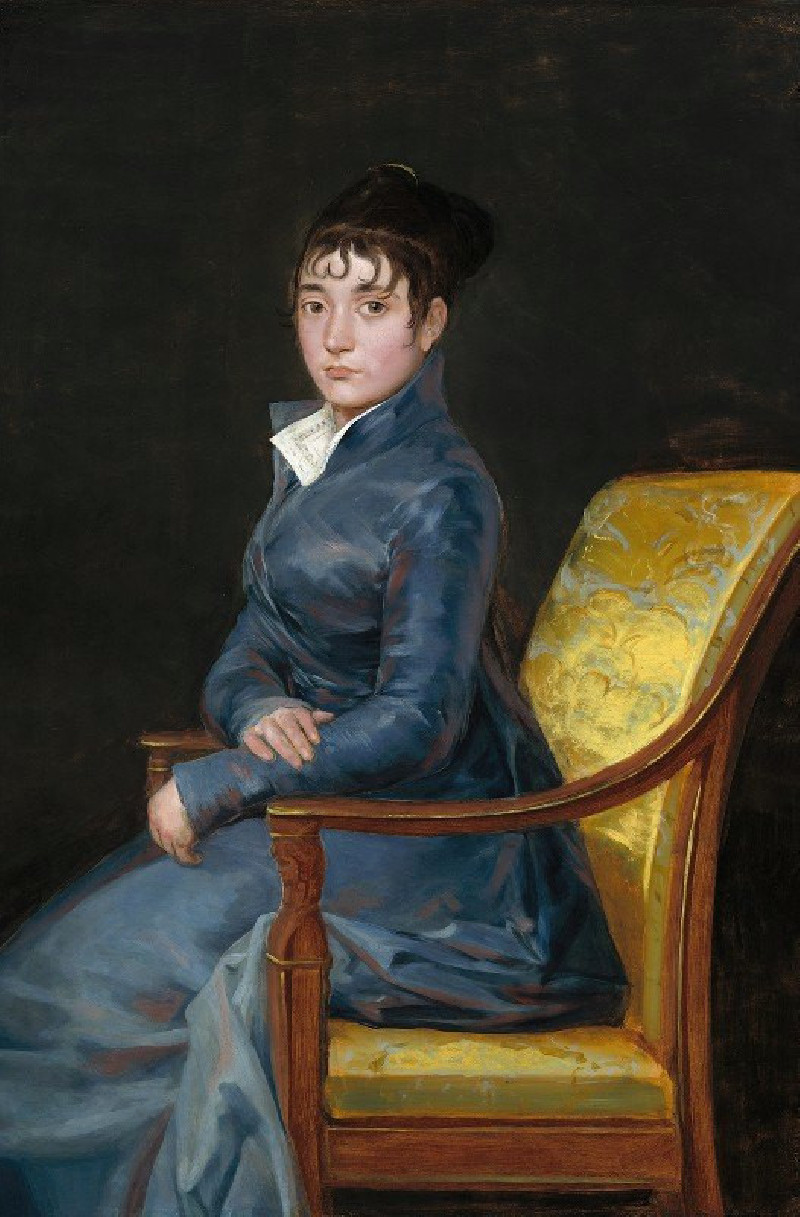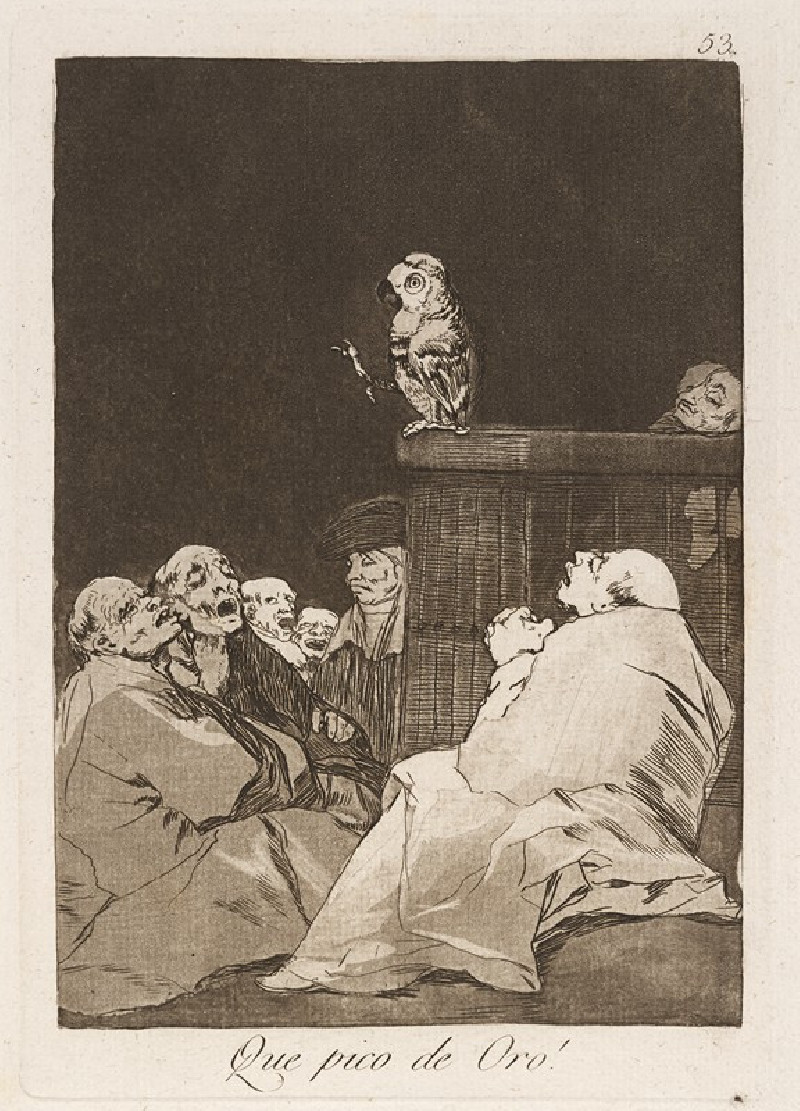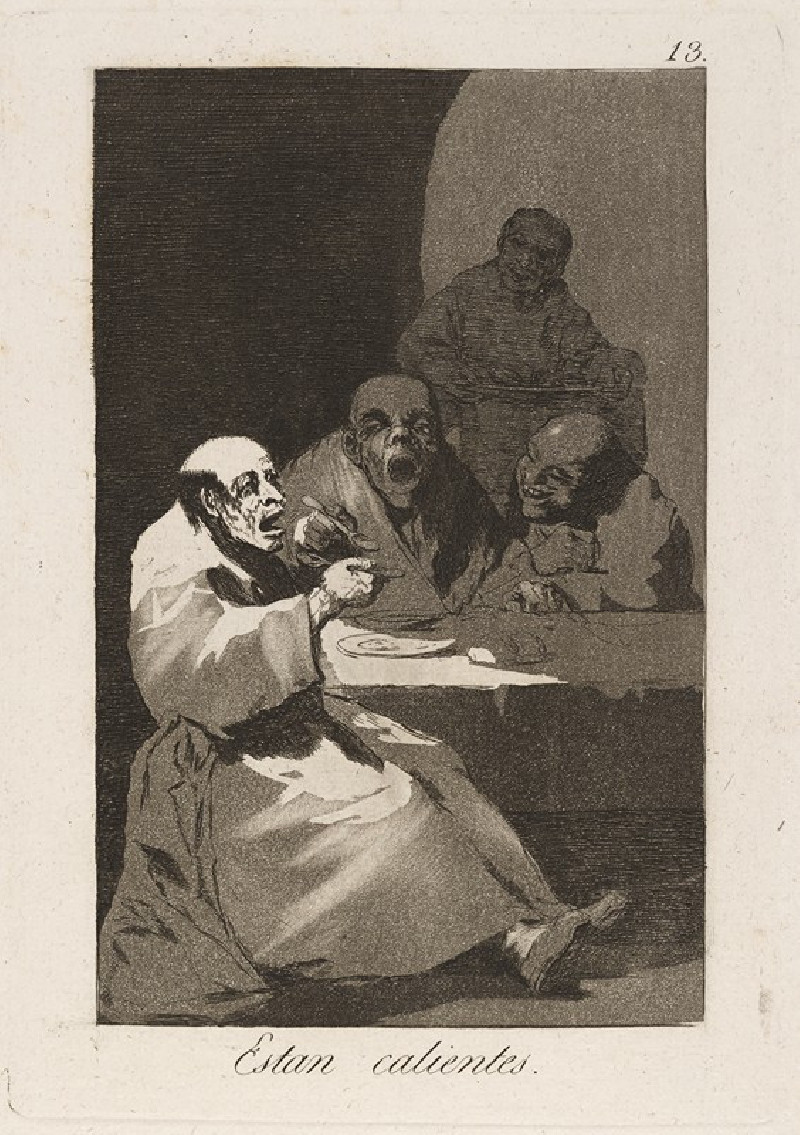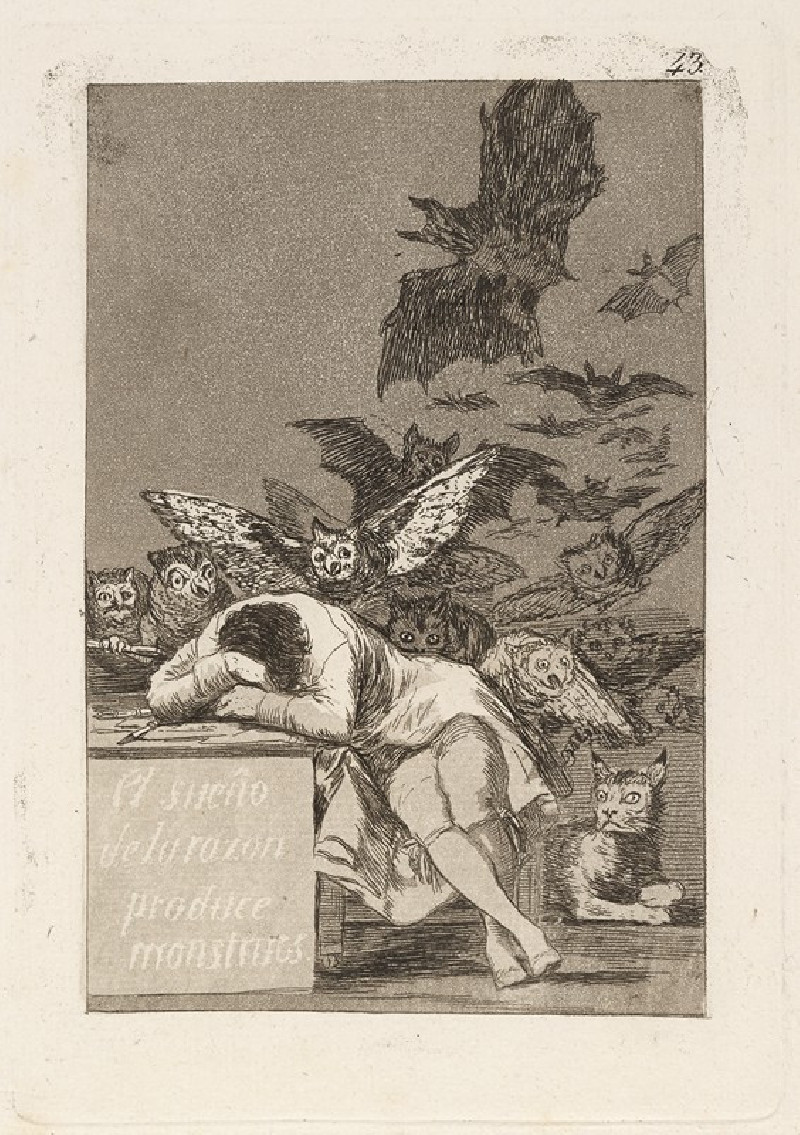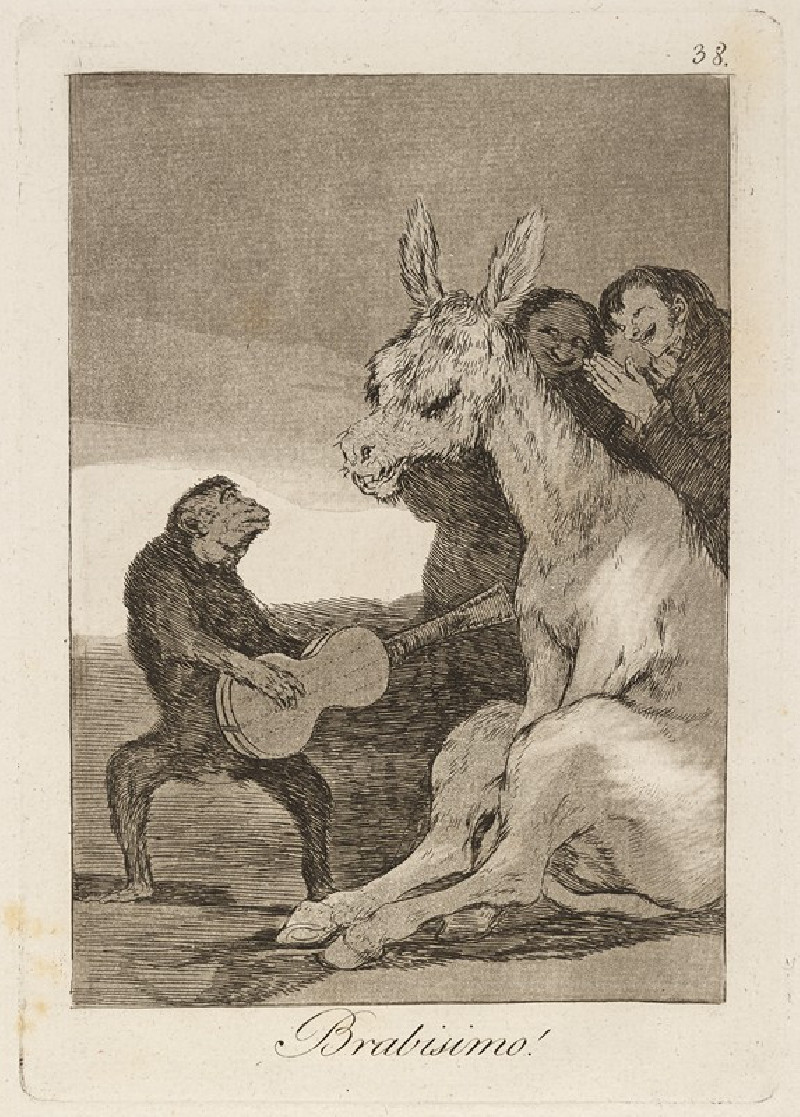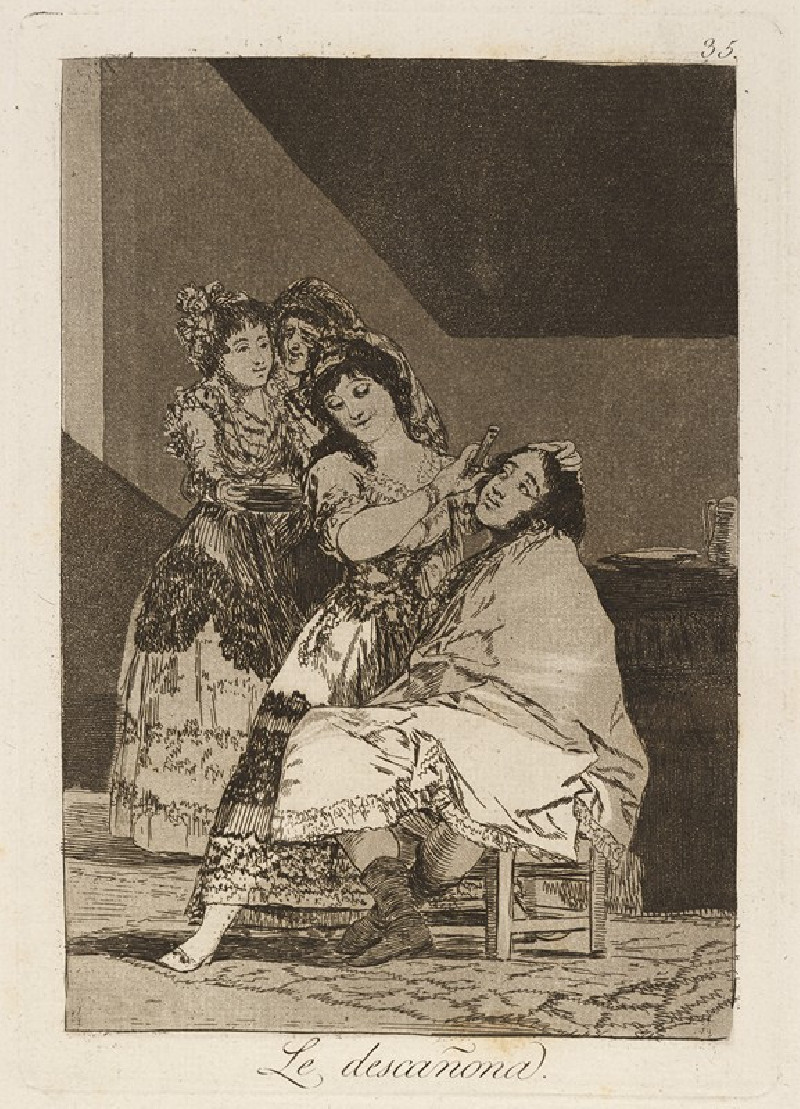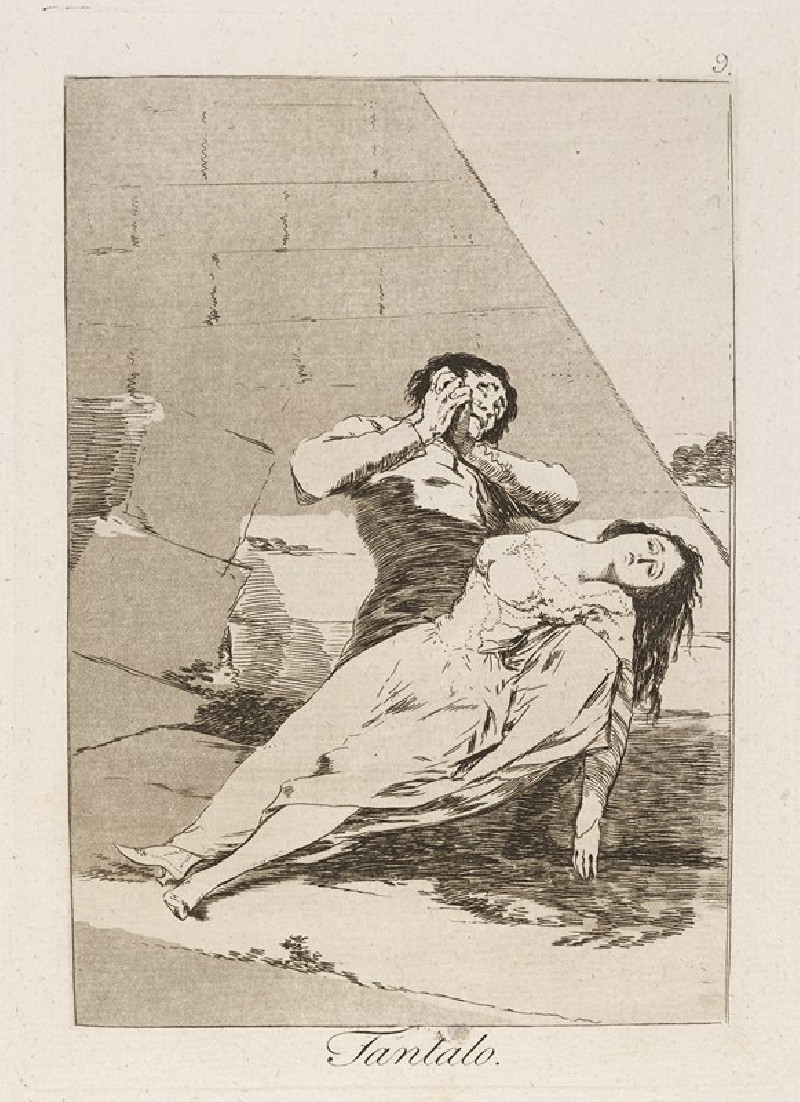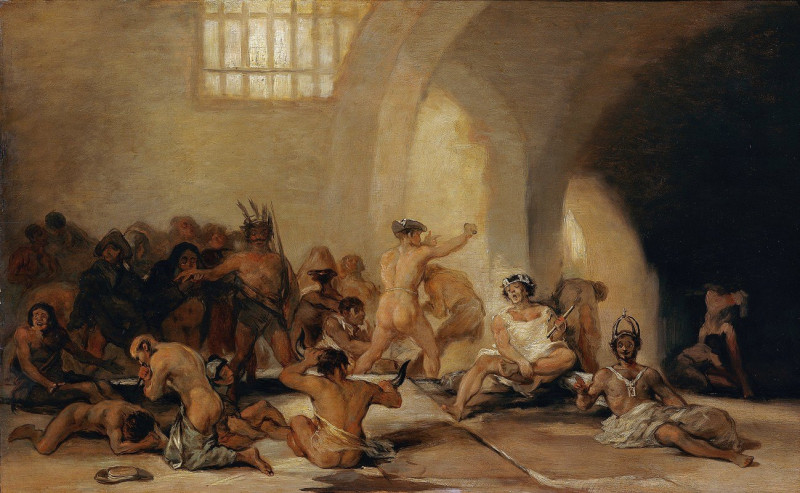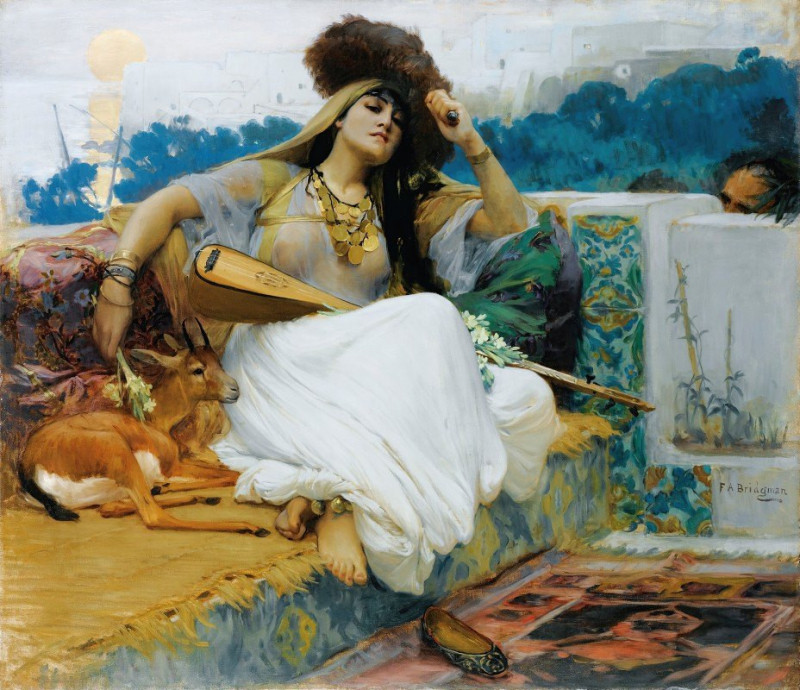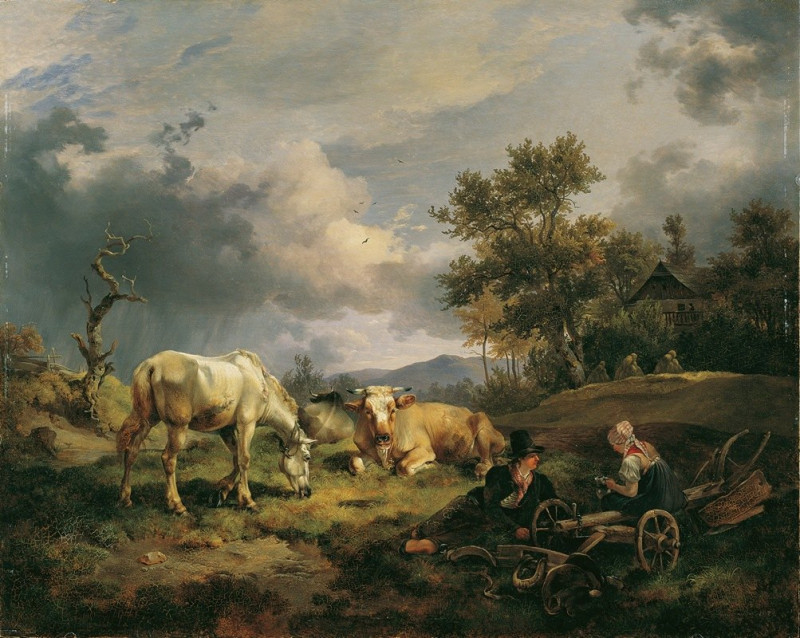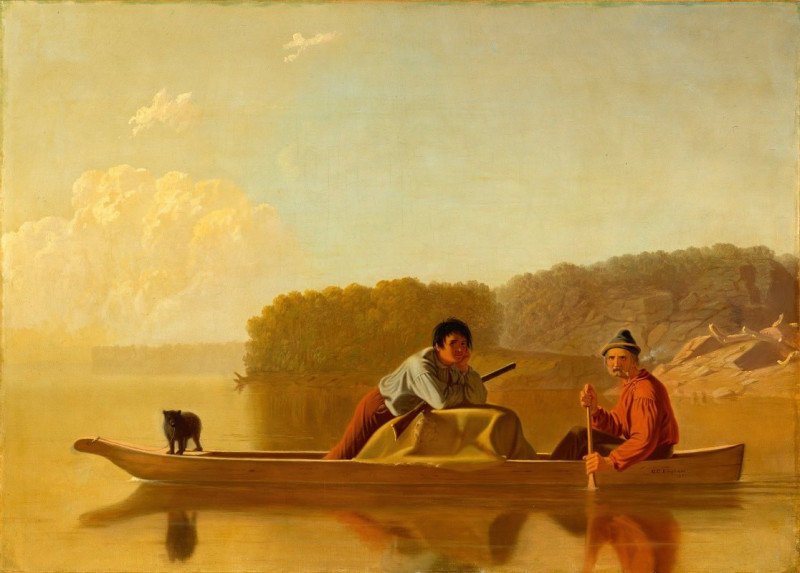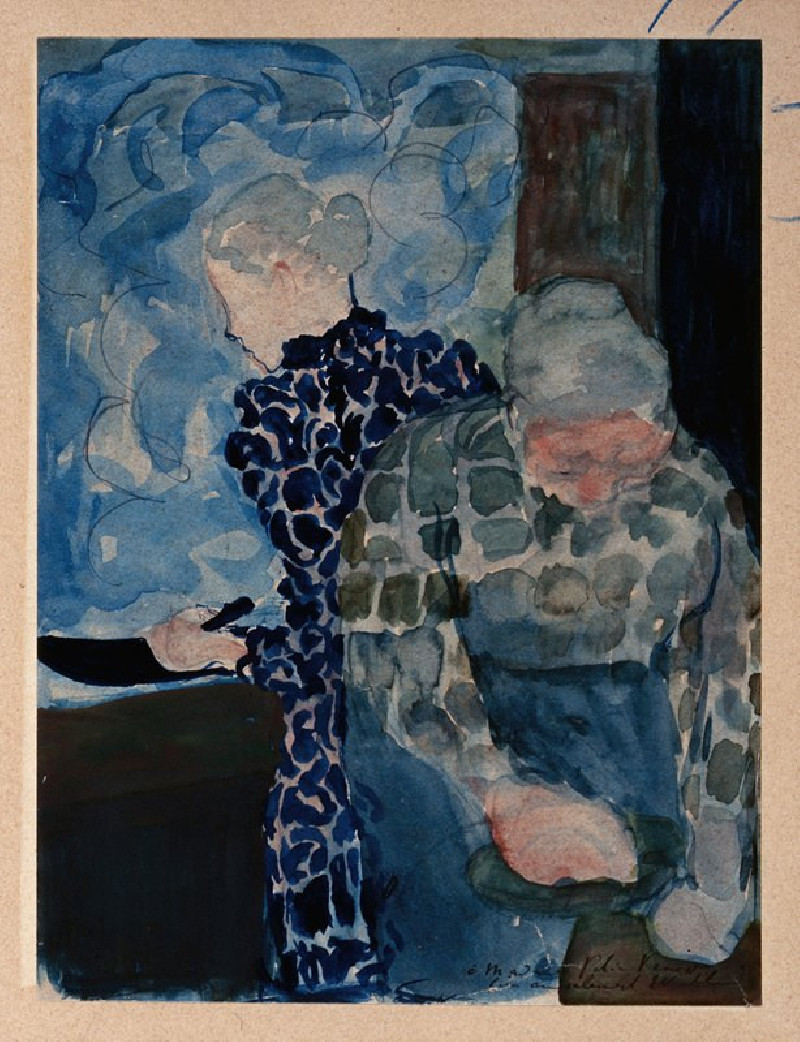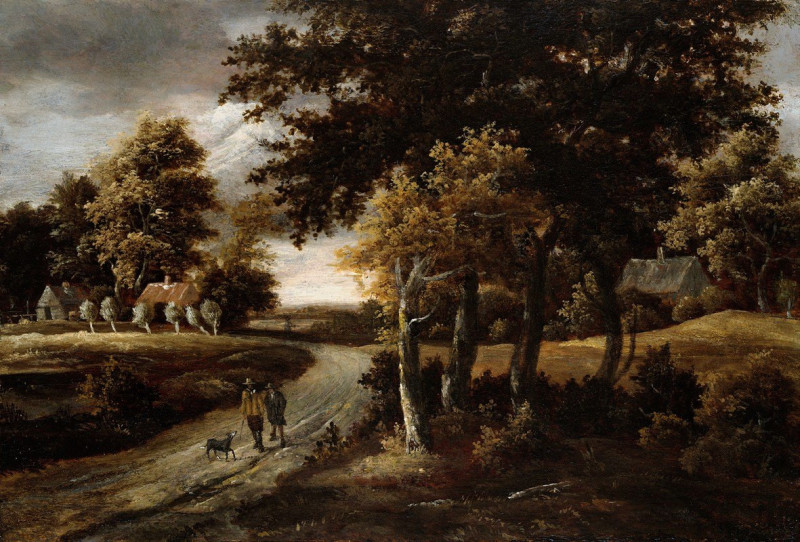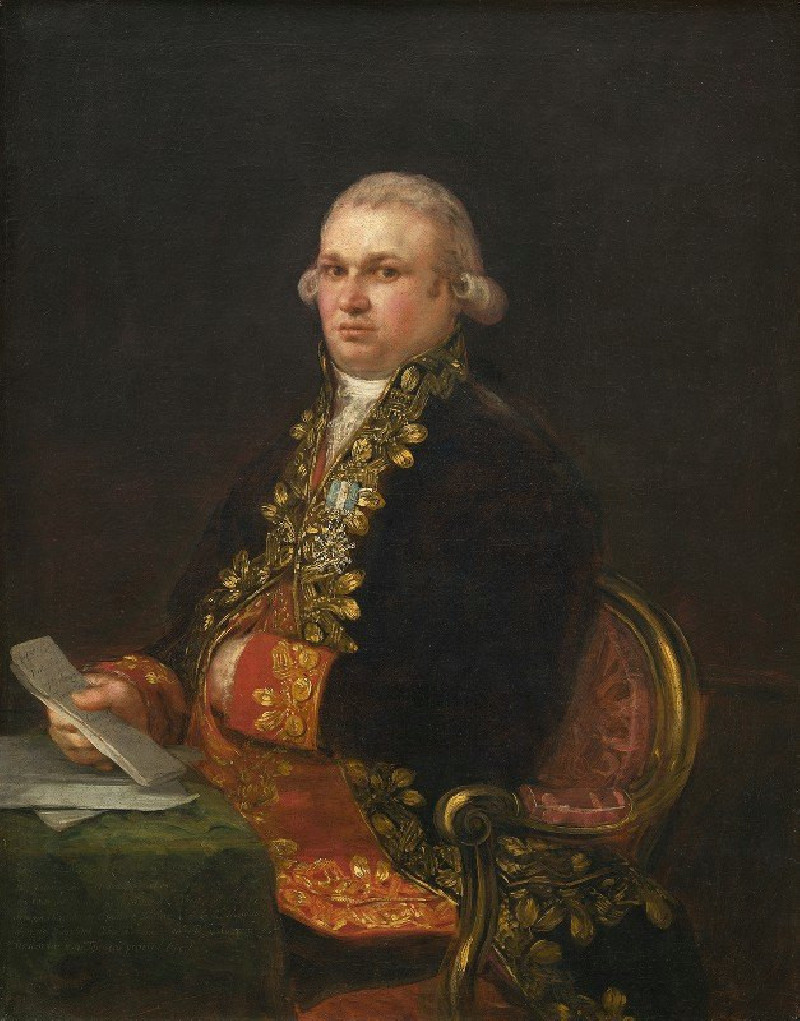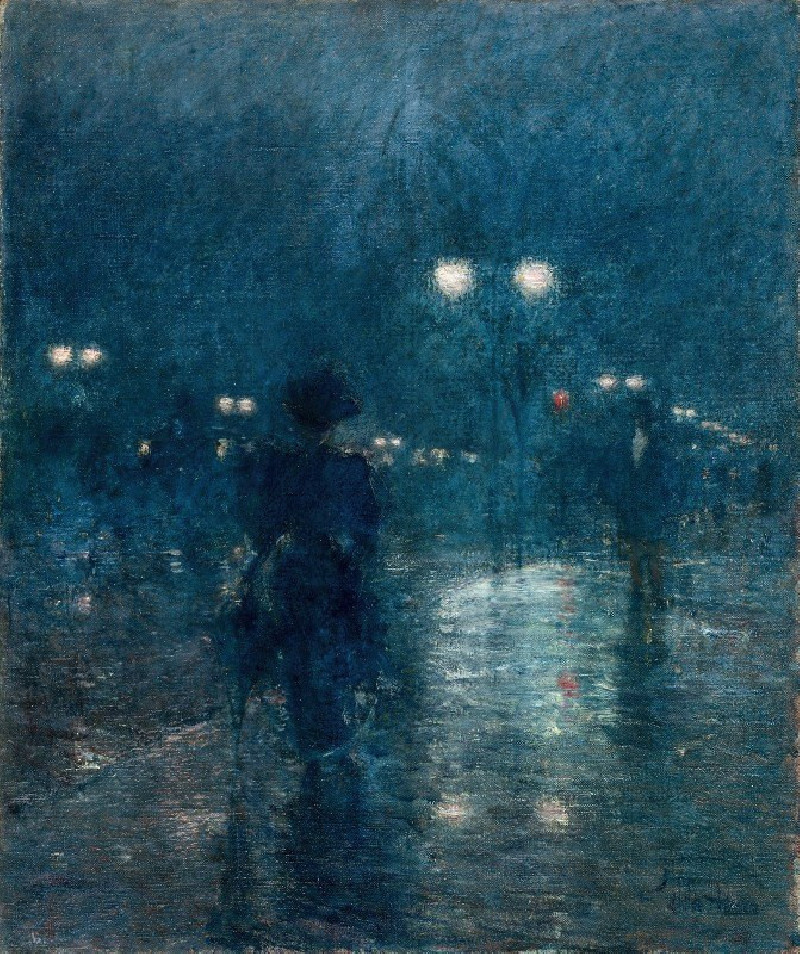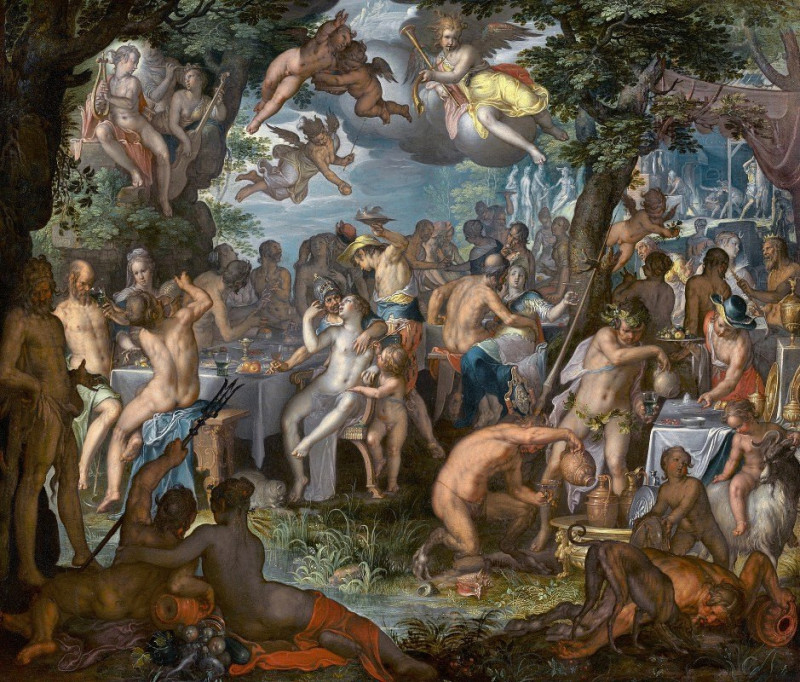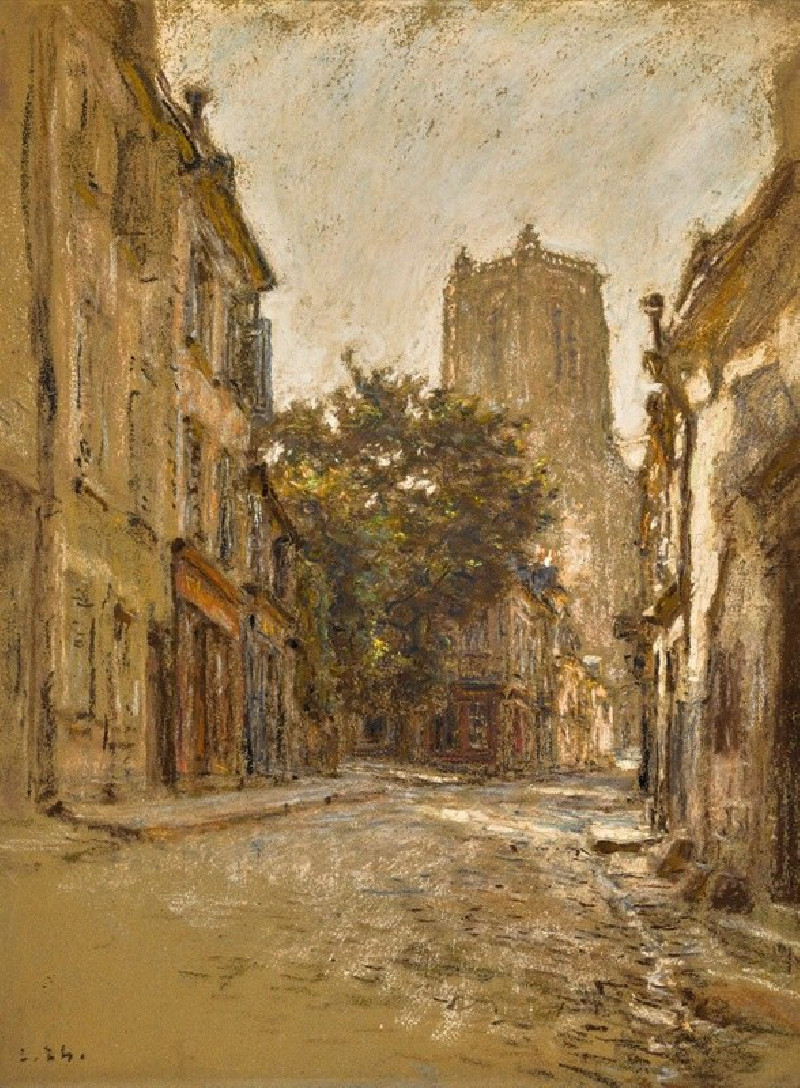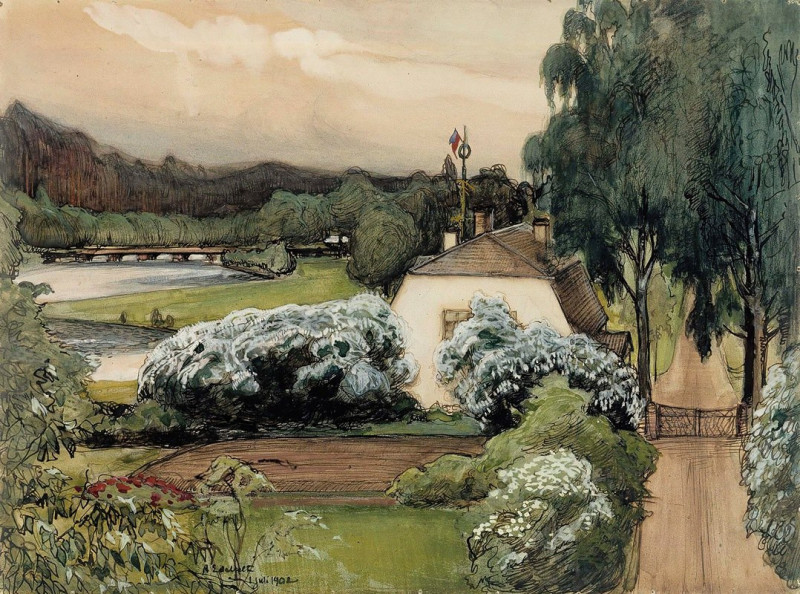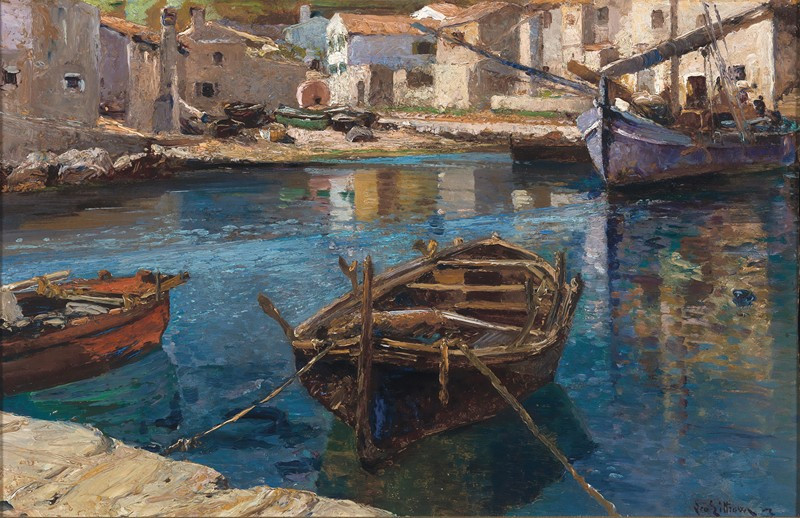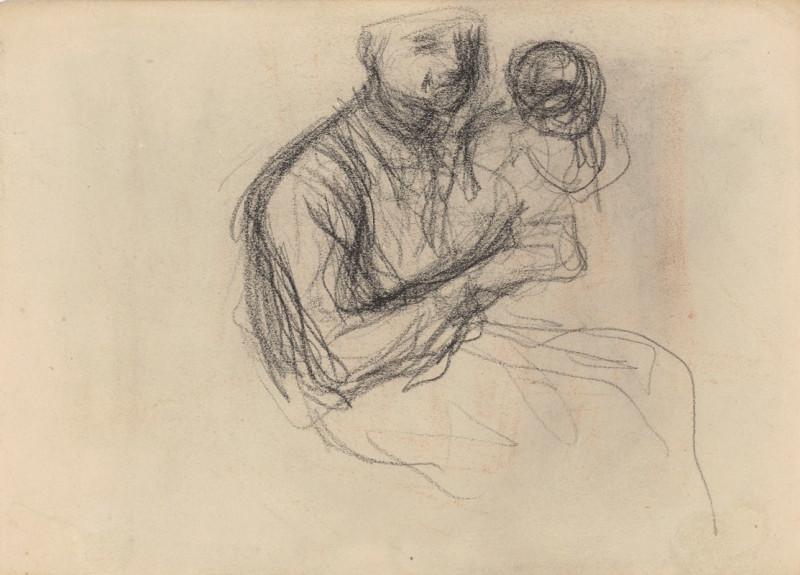Aquellos polbos. (Those specks of dust.) (1796-1797)
Technique: Giclée quality print
Recommended by our customers
More about this artwork
Francisco de Goya's etching titled from 1796-1797 is a profound representation of satire in the Spanish society of his times, part of his illustrious series, "Los Caprichos." The artwork features a striking image of a woman wearing a large, conical hat—often interpreted as a coroza or a symbol of public penance or shame. She is seated and seemingly deep in prayer or meditation.The backdrop is intricately filled with diminutive heads or faces, possibly depicting those who judge or gossip, their faces blurred and indistinct like mere 'specks of dust' in her life. Adjacent to her, a man is seen reading from a book, suggesting a form of authority or legal proscription, highlighting the endless scrutiny and moral judgement passed by society.This etching is a masterful critique by Goya on the hypocrisy and the harshness of societal norms, where individuals are often overwhelmed by the weight of public opinion and condemnation.
Delivery
Returns
Francisco José de Goya y Lucientes (30 March 1746 – 16 April 1828) was a Spanish romantic painter and printmaker. He is considered the most important Spanish artist of the late 18th and early 19th centuries. His paintings, drawings, and engravings reflected contemporary historical upheavals and influenced important 19th- and 20th-century painters. Goya is often referred to as the last of the Old Masters and the first of the moderns.

